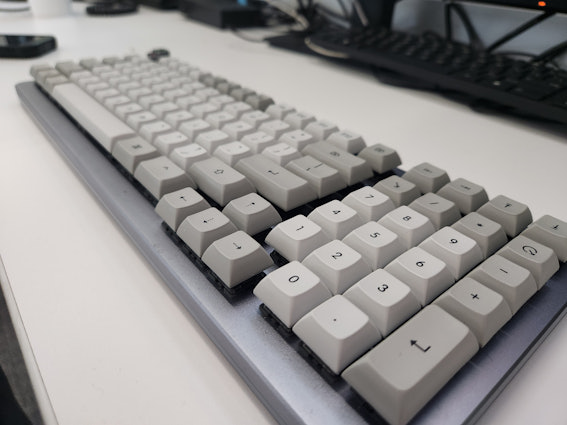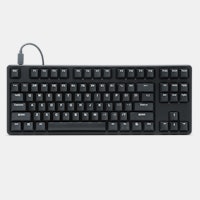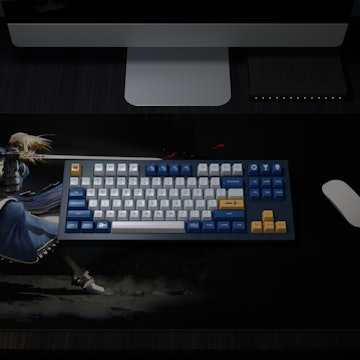Click to view our Accessibility Statement or contact us with accessibility-related questions84% would recommend to a friend 











Drop SHIFT V1 Mechanical Keyboard
Drop SHIFT V1 Mechanical Keyboard
bookmark_border
Where's the price?
To negotiate the best possible price for our customers, we agree to hide prices prior to logging in.
6.8K requests
·
Free Returns in USA
Product Description
The latest addition to our family of mechanical keyboards, the Drop SHIFT is our largest and most ambitious undertaking yet. Done in the compact 1800 layout, it’s still significantly shorter than a traditional full-size keyboard, which frees up desk space for other gear Read More
Review Highlights:
expand_less
Q&A Highlights:
expand_less
Customer Reviews
4.2
(339 reviews)
5star(165)
4star(109)
3star(34)
2star(15)
1star(16)
By Feature
Sound
SilentLoud
Feel
StiffFlexible
Build Quality
4.0
(10)
ActivitiesPopular among reviewers
Paired SwitchPopular among reviewers
search
close
Images
keyboard_arrow_downSort by: Newest
keyboard_arrow_downTravy
0
Nov 29, 2024
Activities:Gaming
Paired Switch:Tactile
Keyboards Owned:4
checkVerified Buyer
Feet rubber falls off
Product is decent overall, the issues I have is the cord disconnecting sometimes, the keyboard freezing up and having to be unplugged and plugged back (doesn't happen very often but are very annoying). The bottom rubber is all falling off and leaving behind adhesive. Customer support offered no solutions or recourse which is the reason for 2 stars. After the first one fell off the rest of it are following.

Recommends this product? No
Ranx3rox
0
Jul 4, 2024
Activities:Work & Gaming
Paired Switch:Linear
Keyboards Owned:4
checkVerified Buyer
Drop Shift Keyboard
I got mine with the Halo silver switches which were awful. Also who would put the delete key where it is. I bought Tangerine key switches which makes the board so much better... but the layout is still awful. I am in the process of customizing the keyboard layout with custom keys. Wish I didnt buy it.
Recommends this product? No

wudkeys
16
Keyboard Club Member
May 14, 2024
Activities:Work & Gaming
Paired Switch:Tactile
checkVerified Buyer
Fine board for its time, outdated now
This form factor is my favorite. The Shift is a fine board still but is pretty outdated now with a severe lack of features compared to its competitors at its price point. The main issue for me specifically is the lack of support for 5-pin switches.
Recommends this product? No

c--a
3
Oct 12, 2023
checkVerified Buyer
Not worth it
This review is long overdue, but I thought I would write something up seeing as how Drop released a V2 of this keyboard.
tldr; Pass on this board. There are cheaper and better options literally everywhere else.
The keyboard itself is really expensive and for what it is, it honestly doesn't really do anything better than what you could buy with the same amount of money or less. In fact, there are many offerings that cost less in which this keyboard can't even be mentioned or let alone be referenced within the same sentence.
Without getting too deep into all the specifics, the main issues with this board is the price point in which they are selling it compared to what's inside the board.
- The PCB is a hot-swap socket but only allows for 3-pin switches.
- The stock stabilizers are at best terrible.
- Case has a lot of hollow/pingy noise when you type.
- The RGB lights per key are north facing-- which I guess could be seen as fine since the design/marketing choice was to have this primarily as a light up RGB board.
- The configurator Drop provides to program the board is limiting and doesn't matter since you would need to re-flash every time you disconnected your keyboard.
(Edited)
AndrewCMc
1
Oct 22, 2023
c--aI totally agree. The v2 board is $75 and not a substantial upgrade. For the foam and pcb you're looking at $100. Thats insane for how little you get. There are $75 options that come with aluminum case and well lubed switches and stailizers.
I have a v1 board and the 1/! Failed. Changed out switches with a woking key and the switch is good. No bent pins or bad contacs. Item was a gift and i think it was purchased locally so they won't cover it. And I'm sure not spending that much on a board. I guess it will be desk art.
I regret ever even thinking these keyboards are premium options. Definitely better than a big manufacturer product but not considered premium. Just carries a premium price point for a solid midteir keyboard.
axiao123
0
Oct 12, 2023
Activities:Work & Gaming
Paired Switch:Tactile
Keyboards Owned:5
checkVerified Buyer
Excellent keyboard
No complaints, as described. Would recommend.
Recommends this product? Yes
lunabee
0
Oct 11, 2023
Activities:Work & Gaming
Paired Switch:Linear
Keyboards Owned:1
checkVerified Buyer
Luxury Keyboard
Ever since I purchased this to up my ergonomics and web dev output it’s stood the test of time. 3-4 years later and it still works like a dream and is easy to clean. I’ve swapped key caps, cleaned it and it’s moved more times than I can count. As long as you take care of it, prepare to have a lifelong keyboard.



Recommends this product? Yes
JoshX
12
Jul 18, 2023
Paired Switch:Tactile
Keyboards Owned:5
checkVerified Buyer
Better Options out there
I bought one before I knew more about the hobby, what was available, and I wanted to own a 1800.
Build is a case mount and requires plate mounted stabilizers, the assembly doesn't allow almost any modding, but I had some fun with all these restrictions; I placed some foam from stupidfish (https://stupidfish.design/collections/keyboard-foams/products/drop-shift-low-profile-case-and-plate-foam-set) and placed some DSA keycaps on because DSA is a profile that is really sound neutral.
All in all I can't recommend unless you want to try and give yourself a challenge modding.




Recommends this product? No

Ichibrosan
0
Jul 4, 2023
Activities:Work
Paired Switch:Clicky
Keyboards Owned:17
checkVerified Buyer
A HUGE DISAPPOINTMENT
i Bought this expensive keyboard (had to wait for it) because I needed buttons with a certain touch to get along with my fingers. The problem is that I am not a touch typest. I am a sight typest. I cheat. I am a very fast sight typest. I type c++ code like lightning, on the right keyboard. But I have to be able to read the key-caps. The default lighting pattern is a slow switch between a rainbow of colors, continuously. But between the colors, there is a space where the keys are unlit. So I am typing along and all of a sudden the key go blank. I do research to see how you change the lights. There is a web page to design a new layout and it spits out a config file. Then you do something with the config file that writes it into the keyboard. But nobody at Drop know what that it. No one could help me. A dozen emails to support and no joy. The buttons are perfect, I love them, but the lighting is toxic top my eyes. another pile of money spent and hours wasted with no resolution. I believe everyone at the company is a marketing person and there are no engineers who know anything. I am completely kerfuddled.
Recommends this product? No

UnkemptCostanza
0
Aug 12, 2023
Ichibrosanyou can hit the right-side Alt+A to cycle through the default color schemes. the layout design is for customizing that setup if you want to change anything

Nagapala
0
Jun 25, 2023
Activities:Work & Gaming
Keyboards Owned:0
checkVerified Buyer
My first keyboard, I love it.
I need a numpad, so this keyboard was perfect for me. I am shocked what a pleasure it is for when I’m writing, and it’s been great when I’m playing games too.
Recommends this product? Yes

fakenews
0
May 13, 2023
Activities:Work & Gaming
Paired Switch:Clicky
Keyboards Owned:4
checkVerified Buyer
Good Keyboard, Bad Cables
Amazing keyboard, but the cable snapped after a few months. I'd recommend buying your own
Recommends this product? Yes
Showing 12 of 430
Recent Activity



.png?auto=format&fm=jpg&fit=crop&w=30&h=30&dpr=1&q=70)




























